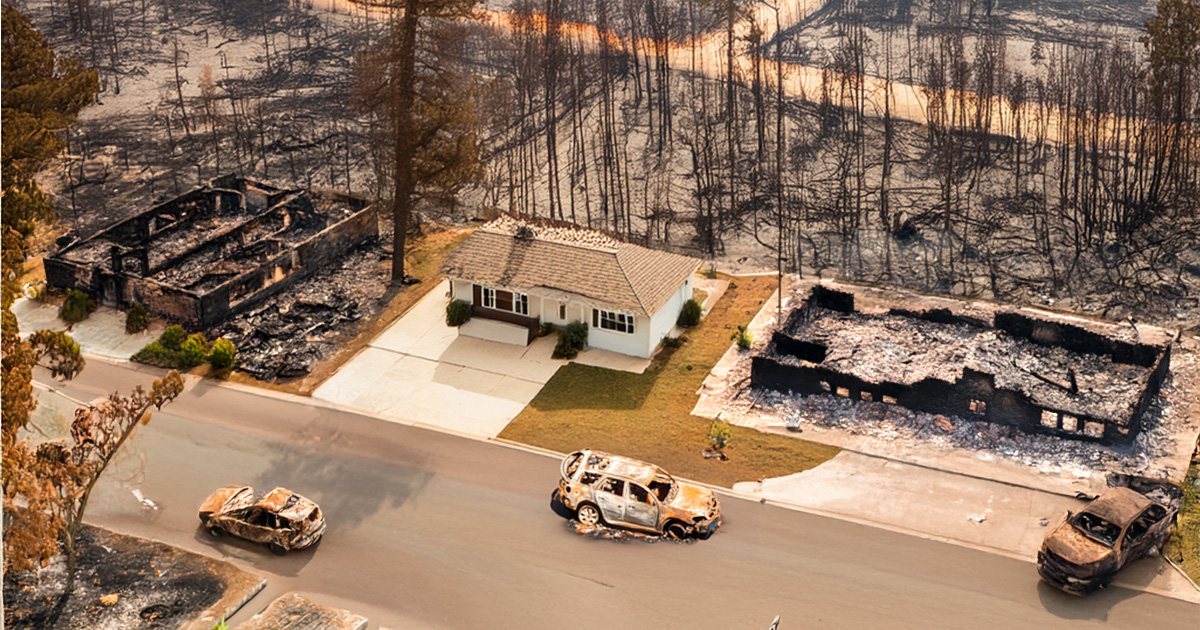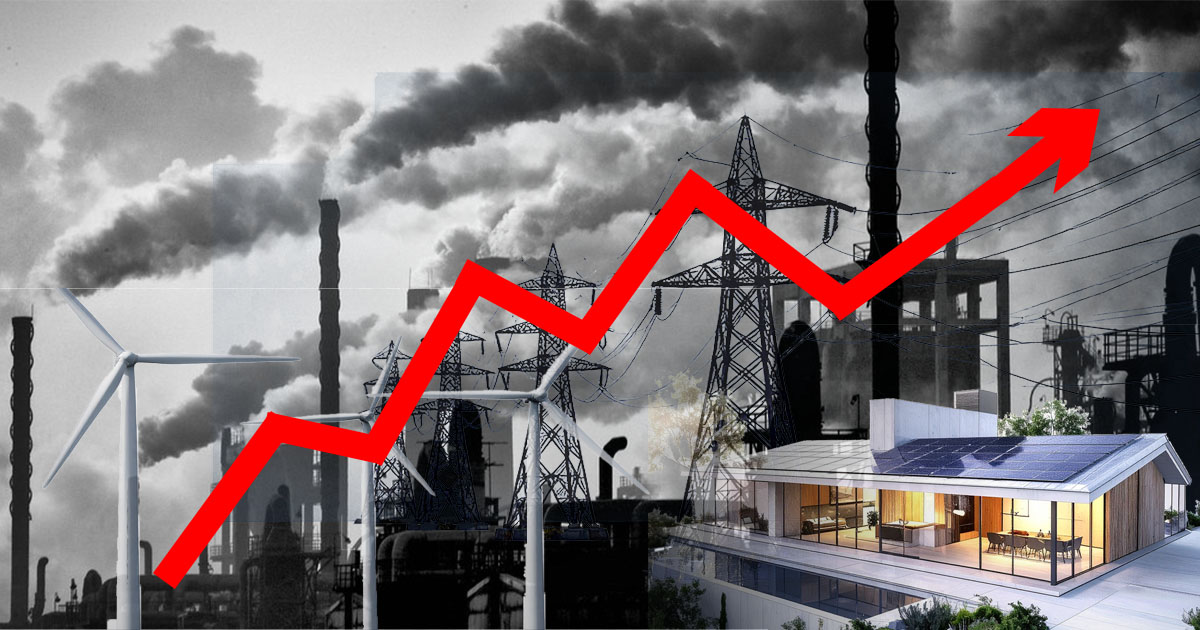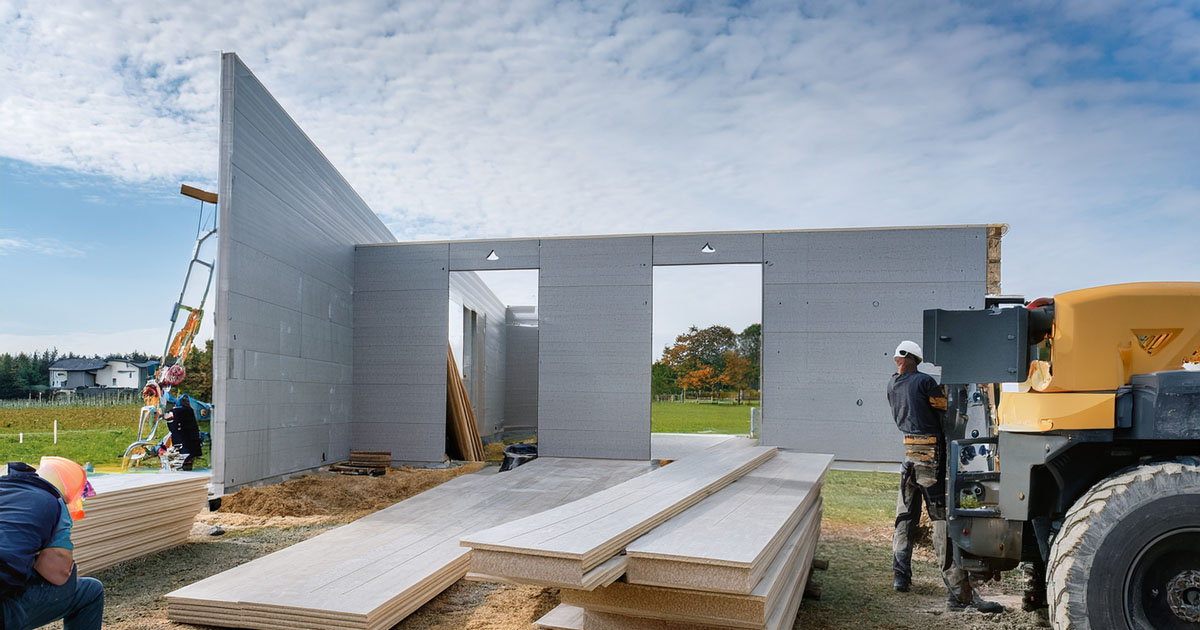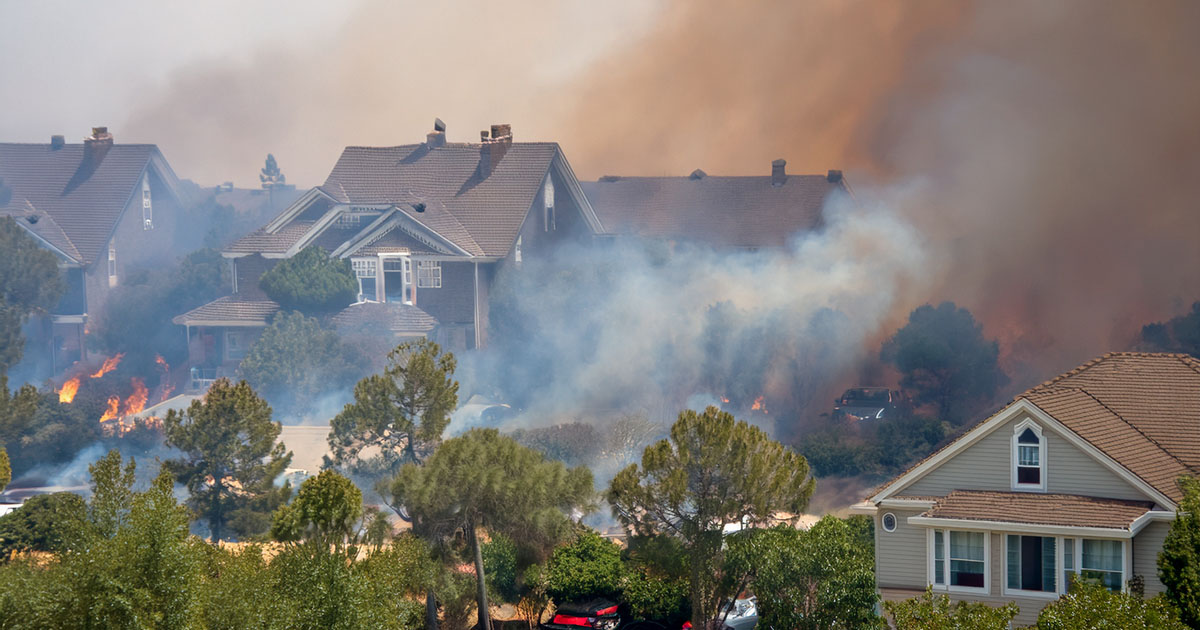Why Rising Energy Costs Make Smarter Housing a No-Brainer
What a recent Ezra Klein episode reveals about cost, permitting, and how to rebuild faster On a recent episode of The Ezra Klein Show, climate...
4 min read
 Timothy Lorang
:
Updated on July 6, 2025
Timothy Lorang
:
Updated on July 6, 2025

When it comes to wildfires, speed is everything. Fires can jump highways, level homes in minutes, and spread from building to building like dominoes. But just as dangerous as the fire itself is what it ignites next: rooftops, siding, furniture, framing. What if buildings could resist ignition altogether? What if they could even slow — or stop — the fire’s advance?
This blog explores how Magnesium Oxide (MgO) panels, when used in modern construction systems like Structural Insulated Panels (SIPs), can do just that. From thermal performance to health and safety, MgO offers fire resistance unlike anything traditional wood framing can match — and the science, and now real-world testing, backs it up.
Most American homes are built with combustible materials — primarily wood framing, OSB sheathing, and paper-based insulation. These assemblies act like a wick in a wildfire, pulling flames across communities. Fire officials and researchers have long warned that it’s not always the flames themselves that destroy homes, but the embers.
A detailed 2022 report by the National Institute of Standards and Technology (NIST) explained how embers — not direct flames — are often the primary cause of structure ignition in wildland-urban interface (WUI) fires. These fine, wind-driven particles can travel long distances and infiltrate buildings through attic vents, cracks, or combustible fencing. As NIST notes:
“The hazards associated with both fire and ember exposures need to be mitigated... the widespread extent of ember exposures [creates] situations where structural ignition can occur even in the absence of direct flame contact.”
— NIST Technical Note 2205 (2022)
Traditional homes simply weren’t designed to stop this.
Magnesium Oxide (MgO) is a naturally occurring mineral compound. When engineered into structural panels, it creates a building material that is:
Unlike gypsum-based drywall or wood-based sheathing, MgO panels do not burn, feed a fire, or degrade when exposed to heat. Instead, they form a heat-absorbing, flame-resistant barrier.
A striking example of this was captured in a public demonstration video, where a single small test structure was built with two halves:
The building was subjected to direct flame exposure. After one hour, the wood-framed half was fully engulfed in flames. The MgO SIP half remained standing, with no structural collapse — and was cool enough to touch with a bare hand on the exterior. The test showed that MgO panels can maintain integrity under extreme fire exposure — over 2,000°C (3,600°F).
This video is one of several such examples visible online, demonstrating how nearly all MgO structures perform similarly. Simplus Systems does not endorse the particular manufacturer shown.
The fire resistance of MgO panels comes from both chemistry and structure:
These panels are often rated for 1- to 2-hour fire resistance in wall assemblies — without needing additional drywall or cladding layers.
Beyond surviving flames, MgO panels offer performance benefits that address multiple climate and construction challenges:
In the Lahaina fires of August 2023, one of the only homes left standing along Front Street was spared due to simple, practical fire-resistant choices: a metal roof, minimal nearby vegetation, and stone or concrete buffers around the house. According to NPR and Euronews, the homeowners had removed flammable landscaping, replaced fencing with stone, and installed a heavy-gauge steel roof. These decisions aligned with CAL FIRE and FEMA defensible space guidelines — and very likely saved the structure.
The 2018 Woolsey Fire destroyed more than 1,600 structures. But neighborhoods that had enforced defensible space standards and used non-combustible siding experienced significantly reduced losses. A 2023 study published in Science of The Total Environment analyzed nearly 11,000 buildings and confirmed that defensible space and building material choice played a statistically significant role in structure survival.
CAL FIRE’s Home Hardening Guide drives this point home:
“Home survival in wildfire prone areas depends on a combination of adequate vegetation management… and choices regarding building materials and design decisions.”
Homes made with MgO, metal roofs, ember-resistant vents, and fire-rated windows don’t just survive fires — they can slow the spread, protecting adjacent homes and buying time for occupants to leave while firefighters arrive.
Speed of assembly isn’t just a convenience — it’s a survival strategy.
Disaster recovery hinges on the ability to rebuild quickly, affordably, and safely. MgO SIPs can be assembled in days, not months, reducing exposure to weather delays and labor shortages. Prefabricated panels arrive with integrated insulation, framing, and finishes — reducing jobsite waste and guesswork.
For architects and builders in fire-prone areas, prefabrication with MgO offers a triple benefit: faster builds, healthier interiors, and longer-lasting resilience.
If you read our post, Wildfire Resilient Homes: Safe Indoor Air with Passive House Design, you already know how Passive House–certified buildings can keep smoke and toxic air out during a wildfire.
Now imagine pairing that airtight, filtered envelope with a fire-resistant structure that doesn’t burn in the first place.
That’s what the Simplus Building System™ offers — a combination of Passive House performance and MgO SIP durability. Together, they create homes that are:
If you’re a homeowner, builder, or policymaker looking for better ways to rebuild or protect your community, let’s talk.
Contact Simplus Systems to learn how we’re using MgO panels and Passive House design to build wildfire-resilient homes for a hotter, smokier future.

What a recent Ezra Klein episode reveals about cost, permitting, and how to rebuild faster On a recent episode of The Ezra Klein Show, climate...

Wildfires don’t just destroy homes—they upend entire communities. From Paradise to Lahaina to Los Angeles, fire survivors face years of delays, red...

When a wildfire hits, most people worry about flames. But smoke is often both the immediate killer and the more pervasive, long-lasting...